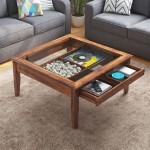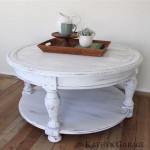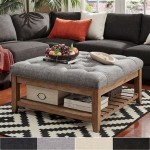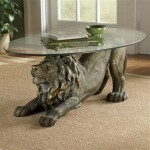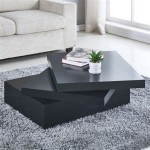How To Measure the Size of a Round Table
Determining the size of a round table involves measuring specific dimensions. Understanding these measurements and how they relate to the table's capacity is crucial for selecting the appropriate table for a given space and purpose.
The primary measurement for a round table is its
diameter
. This represents the length of a straight line passing through the center of the circle, connecting two points on the circumference. Diameter dictates the overall footprint of the table and is the most commonly used measurement when discussing table size.To measure the diameter, one needs a measuring tape. Begin by locating the center point of the tabletop. This can often be identified by finding the center of any pre-existing design or pattern. If no clear center is visible, one can create perpendicular lines across the table from opposite edges. The intersection of these lines marks the center. Then, extend the measuring tape across the tabletop, passing through the center point, to the opposite edge. The length from edge to edge, passing through the center, is the diameter.
Another relevant measurement is the
radius
. The radius is half the length of the diameter. It represents the distance from the center point of the tabletop to any point on the edge. While less commonly used than the diameter, the radius can be useful in calculations involving the table's area or when working with circular layout designs.Calculating the radius is simple once the diameter is known. Divide the diameter by two to obtain the radius. Conversely, if the radius is known, multiply it by two to determine the diameter. Both measurements offer valuable information regarding the table's size.
In addition to diameter and radius,
circumference
represents the total distance around the edge of the table. While less crucial for determining table size for placement purposes, circumference can be helpful when planning things like tablecloth dimensions or adding decorative elements around the table's perimeter.To calculate the circumference, one can use the formula: Circumference = π * Diameter, where π (pi) is a mathematical constant approximately equal to 3.14159. Alternatively, if the radius is known, the formula becomes Circumference = 2 * π * Radius. Accurate measurement of the diameter or radius is essential for accurate circumference calculation.
Understanding the relationship between these measurements is key to correctly assessing table size. For instance, a table with a larger diameter will naturally have a larger circumference and radius. This translates to a greater surface area and the ability to accommodate more individuals.
When measuring a round table with a leaf, it’s important to consider both the closed and extended dimensions. Measure the diameter with the leaf down for the table's standard size. Then, insert the leaf and measure the diameter again to determine the extended size. This approach provides a clear picture of the table's capacity in both configurations.
For tables with non-circular bases, measuring the base's diameter or dimensions can be helpful for space planning. This ensures that the base fits comfortably within the allocated space and doesn't obstruct movement around the table. Measure the widest points of the base for accurate representation.
The height of the table, while not related to its circular dimensions, is another crucial measurement. Measure the vertical distance from the floor to the top surface of the table. This information is essential for determining appropriate chair height and ensuring comfortable seating arrangements.
Accurate measurement is essential for making informed decisions about furniture placement and usage. Utilizing the appropriate tools and techniques ensures precise measurements, helping to select the right table for the intended space and function. This prevents issues like overcrowding or inadequate seating and contributes to a well-planned and functional environment.
Using a standard tape measure provides sufficient accuracy for most table measurements. Ensure the tape measure lies flat against the table surface and is pulled taut to avoid inaccuracies. Record measurements to the nearest inch or centimeter depending on the desired level of precision.
Consider using a rigid ruler or yardstick for smaller round tables or when measuring parts like the table base. This ensures straight lines and more accurate measurements for smaller dimensions. These tools can also be useful for verifying measurements taken with a flexible tape measure.
By understanding the different measurement parameters and employing appropriate techniques, one can confidently determine the correct size of a round table and ensure its suitability for the intended purpose and space.

How Do I Measure My Table To Order A Glass Top

How To Choose The Correct Size Tablecloth For Your Table

How To Measure Your Table For A Tablecloth Wipe Away Tablecloths

3 Easy Ways To Measure Tablecloth Sizes Your Table Linens Size Guide

Round Table Measurements My Decorating Tips

Round Dining Table Size

Dining Table Dimensions Measurements

How To Measure A Room For Furniture Efurniturehouse Com

Measuring Your Dining Table Sizes Round Room Dimensions

Yardage For Homemade Table Cloths Cloth Diy Tablecloth Sofa
Related Posts

